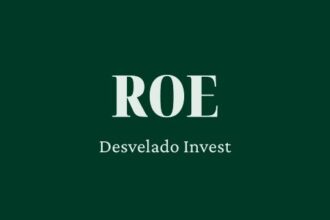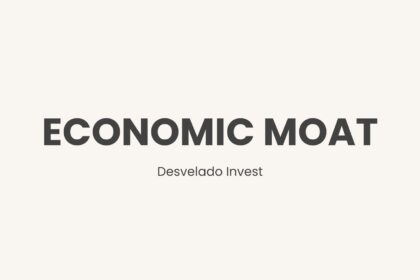Written By: Nishant Parsad
Why ROE Isn’t as Useful as It Seems
Imagine standing in a marketplace, eyeing two stalls selling apples. One vendor claims their apples yield the juiciest bites (read: the highest return), while the other keeps a lower profile but offers excellent value for the price. Which do you choose? Investing based on Return on Equity (ROE) is often like going with the first vendor—tempting, but not always wise.
ROE is a widely celebrated metric for gauging profitability. Its formula is simple:
ROE = Net Profit After Tax (PAT) ÷ Shareholder’s Equity
While this ratio seems like a perfect way to measure how effectively a company generates profit from the money invested by its shareholders, it falls short in capturing the real picture—especially for stock market investors. In this article, we’ll unpack why ROE isn’t as reliable as it appears and explore better alternatives, like Earnings Yield (EY), that align with the realities of market investing.

ROE: The Basics and Why It Seems Useful
At first glance, ROE looks like an investor’s best friend. It measures how efficiently a company uses shareholder funds to generate profit. For instance:
- Company A: Shareholder Equity = ₹100 crore, PAT = ₹10 crore
- ROE = 10%
- Company B: Shareholder Equity = ₹100 crore, PAT = ₹20 crore
- ROE = 20%
Going by ROE alone, Company B seems to be the better performer. But here’s where things get tricky. ROE assumes that all investors bought the stock at its book value per share (BVPS)—the company’s equity divided by the number of shares. In reality, stock market investors rarely purchase shares at book value. They buy at market prices, which fluctuate based on demand, industry trends, and growth prospects.
The Problem with ROE in the Stock Market
A. ROE Doesn’t Reflect Market Price
Imagine you’re buying Company B’s stock. While its ROE is 20%, the market price of its shares has climbed to ₹20, double its BVPS of ₹10. This means you’re effectively paying ₹20 for ₹2 in earnings (EPS), leaving you with a real return of 10% (₹2 ÷ ₹20).
Now, consider Company A, with a lower ROE of 10%. Suppose its shares are undervalued in the market, trading at ₹5 instead of its BVPS of ₹10. Here, your real return is 20% (₹1 ÷ ₹5).
Ironically, the company with the lower ROE offers the better deal for new investors. ROE fails to account for this critical pricing dynamic, making it less relevant for stock market analysis.
B. ROE Ignores Market Volatility
Every investor buys shares at a unique price based on market conditions. As prices fluctuate, the effective return (profitability) varies for each investor, even for the same stock. ROE, tied to book value, remains static and ignores this variability.
For example, during a bull market, high-ROE companies often get overvalued, leading to lower effective returns for new investors. Conversely, during downturns, low-ROE companies can trade at steep discounts, providing higher returns for value-seekers. ROE doesn’t reflect these shifts, making it an unreliable metric for dynamic markets.
C. ROE Can Be Manipulated
ROE is a ratio based on accounting figures, which means it’s open to manipulation. Management can inflate ROE by:
- Using Leverage: Companies can borrow heavily to boost their assets without raising equity. This increases the Assets/Equity ratio (a component of Dupont’s Analysis), artificially improving ROE.
- Ignoring Non-Operating Items: Unrealized gains or intangible assets like goodwill can inflate equity, skewing ROE calculations.
In short, a high ROE doesn’t always mean strong operational performance—it might just be creative accounting.
Why Investors Should Be Cautious of ROE
A high ROE may not mean what you think:
- Doesn’t account for debt: ROE only factors in earnings growth, not how it is achieved. A company might be taking on unsustainable amounts of debt to grow its earnings and pump up its ROE.
- Low-base mirage: Many frequent loss-makers have low shareholders’ equity as losses erode away shareholders’ wealth. The sudden jump in their earnings, thus, can lead to high ROE and the false assumption that the management has overnight found a magic fix.
- Exceptional gains lead to exceptional ROEs: One-time gains, such as those from selling machinery or other physical assets, can significantly inflate earnings in a given year. Consequently, the ROE also appears optically high for the year, giving the false impression that operational profitability has improved.
- Ill-suited for cyclical companies: Cyclical stocks have highly volatile earnings due to the inherent nature of the underlying business. Hence, their ROEs are also highly volatile.
- A Better Metric: Earnings Yield (EY)
To address ROE’s shortcomings, investors should focus on Earnings Yield (EY), which measures profitability based on the price paid for the stock:
EY = EPS ÷ Market Price (or Acquisition Price)
Unlike ROE, EY adjusts for the realities of the market. It factors in the price investors pay for shares, giving a clearer picture of effective returns.
Why EY Works:
- It accounts for market pricing, making it relevant for stock market participants.
- It reflects true value, helping investors identify bargains and avoid overpriced stocks.
- It aligns with value investing principles, emphasizing the importance of buying low to maximize returns.
Practical Implications: ROE vs. Value Investing
Let’s circle back to our earlier example:
- Company B: High ROE, but shares trade at a premium (₹20).
- Company A: Low ROE, but shares trade at a discount (₹5).
For an investor focused on maximizing returns, Company A offers better value despite its lower ROE. This is the essence of value investing—buying good companies at a fair or discounted price rather than overpaying for seemingly stellar companies.
As Warren Buffett famously said:
“It’s far better to buy a wonderful company at a fair price than a fair company at a wonderful price.”
Conclusion: Moving Beyond ROE
ROE, despite its popularity, fails to capture the complexities of stock market investing. Its reliance on book value, susceptibility to manipulation, and disregard for market dynamics make it an unreliable metric.
Instead, investors should prioritize Earnings Yield (EY), which reflects effective returns based on the price paid for shares. By focusing on EY and other holistic metrics, investors can uncover true value and make smarter investment decisions.
In investing, as in life, the most valuable lessons often come from digging deeper. ROE may look appealing on the surface, but a closer examination reveals the need for more nuanced, market-relevant tools like EY.






